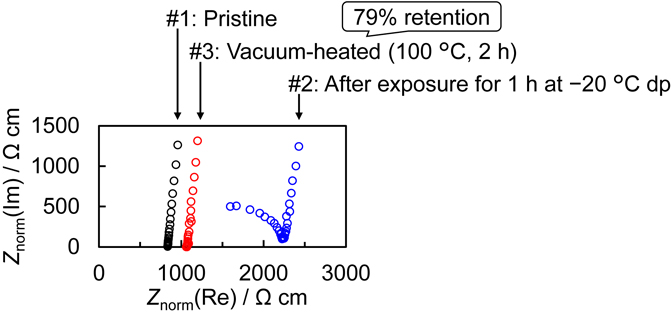- J-STAGE home
- /
- Electrochemistry
- /
- Volume 91 (2023) Issue 5
- /
- Article overview
-
Hikaru SANO
Corresponding author
 https://orcid.org/0000-0002-7557-0767
https://orcid.org/0000-0002-7557-0767
Consortium for Lithium Ion Battery Technology and Evaluation Center (LIBTEC) -
Yusuke MORINO
 https://orcid.org/0000-0002-6973-7786
https://orcid.org/0000-0002-6973-7786
Consortium for Lithium Ion Battery Technology and Evaluation Center (LIBTEC) -
Yasuyuki MATSUMURA
Consortium for Lithium Ion Battery Technology and Evaluation Center (LIBTEC)
-
Koji KAWAMOTO
Consortium for Lithium Ion Battery Technology and Evaluation Center (LIBTEC)
-
Hiroyuki HIGUCHI
Idemitsu Kosan Co., Ltd.
-
Noriyuki YAMAMOTO
Idemitsu Kosan Co., Ltd.
-
Atsunori MATSUDA
 https://orcid.org/0000-0002-6493-1205
https://orcid.org/0000-0002-6493-1205
Toyohashi University of Technology -
Hirofumi TSUKASAKI
 https://orcid.org/0000-0003-0523-5469
https://orcid.org/0000-0003-0523-5469
Graduate School of Engineering, Osaka Metropolitan University -
Shigeo MORI
Graduate School of Engineering, Osaka Metropolitan University
-
Atsushi SAKUDA
 https://orcid.org/0000-0002-9214-0347
https://orcid.org/0000-0002-9214-0347
Graduate School of Engineering, Osaka Metropolitan University -
Akitoshi HAYASHI
 https://orcid.org/0000-0001-9503-5561
https://orcid.org/0000-0001-9503-5561
Graduate School of Engineering, Osaka Metropolitan University
2023 Volume 91 Issue 5 Pages 057004
-
Published: May 26, 2023
Received: March 18, 2023
Released on J-STAGE: May 26, 2023
Accepted: April 09, 2023
Advance online publication
UNCORRECTED PROOF :April 28, 2023
ACCEPTED MANUSCRIPT :April 12, 2023
Revised: - -
Version information
Published online: April 28, 2023 Reason for change: Version has been updated. Changed from previous version: Bibliography,Abstract,References,Fulltext PDF Summary of changes: -
-
Funder information
1.Fund name: New Energy and Industrial Technology Development Organization
Fund/Funder ID:Crossref Funder ID: http://dx.doi.org/10.13039/501100003051
Grant/Award number:・JPNP18003
(compatible with EndNote, Reference Manager, ProCite, RefWorks)
(compatible with BibDesk, LaTeX)



